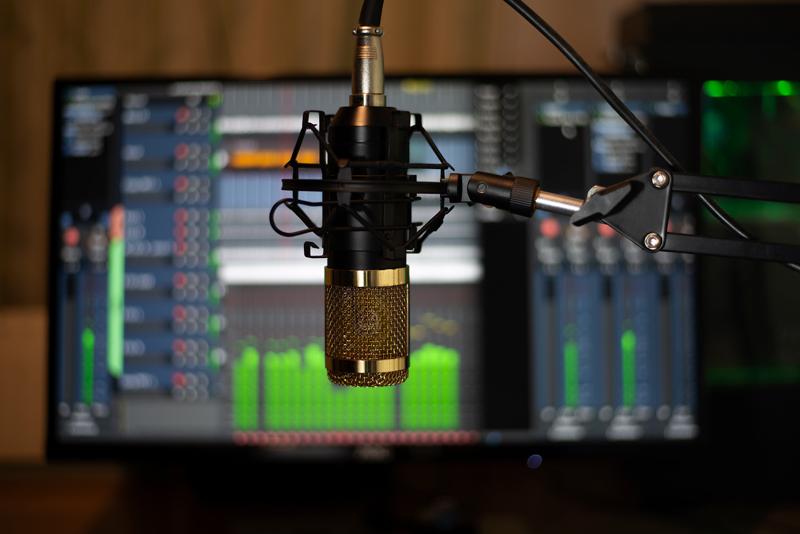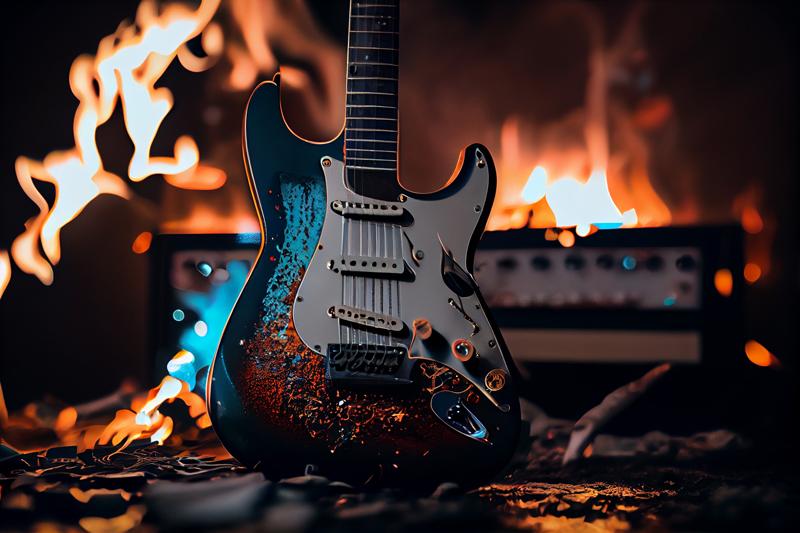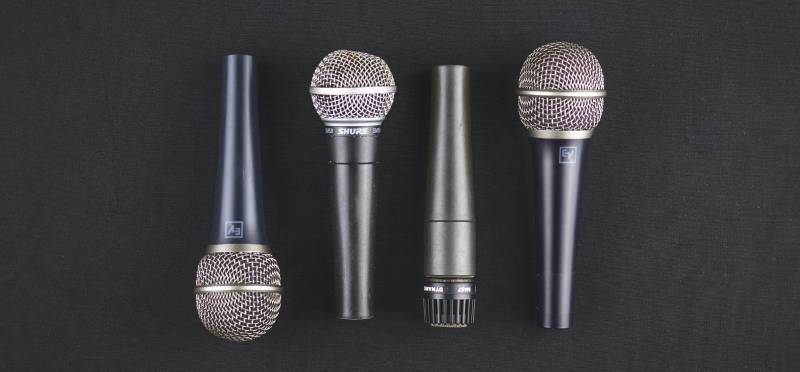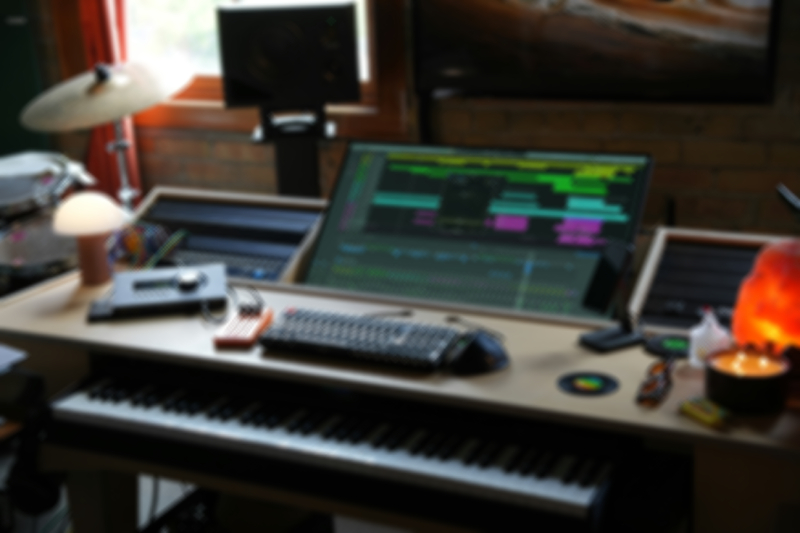Screaming vocal parts are usually present in metal rock music, but they may appear in other genres as well. In general, screaming vocals can be mixed like any other vocal type. However, there are some difficulties and distinctions that set screams apart and bring challenges to the mix engineer. In this article, we’ll describe the step-by-step process of how to work with screaming vocals and make them perfectly sit in your mix.
High recording quality is crucial for screams
 Screaming vocals have a very aggressive structure; a scream may contain a wide range of frequencies, jump from tone to tone, and, at times, be harsh. You’ll work with this type of mix, trying to make it powerful and aggressive but pleasant to the ear.
Screaming vocals have a very aggressive structure; a scream may contain a wide range of frequencies, jump from tone to tone, and, at times, be harsh. You’ll work with this type of mix, trying to make it powerful and aggressive but pleasant to the ear.
However, the ability of a mix engineer to create a perfect vocal mix that contains screaming vocals greatly depends on how well the screams were recorded.
The thing is that not every microphone can give the necessary quality when it comes to a screaming vocalist. If the wrong microphone was used for recording, it is impossible to achieve the perfect sound with mixing.
A condenser studio mic that you normally use to record a vocal sound, for this style and genre will act surprisingly poorly. The vocal sound you receive will be altered and contain a lot of additional sibilances. Generally, dynamic microphones appear more effective than condenser ones when dealing with screams.
So for screaming vocals, we recommend choosing classic dynamic microphones that have been used to record heavy metal and other screaming vocals for many years. The first one that comes to mind is the Shure SM7B dynamic mic, which was successfully used for recording by many famous artists, like Michael Jackson, for example, and bands including Metallica. So if James Hetfield’s voice was captured in full by this mic, you can definitely rely on it when recording your screaming vocal and search no further.
The Shure SM7B has an almost flat frequency response and records different types of vocals, including screams, accurately and with clarity. By the way, it also works well for recording guitars and other instruments’ amp.
However, you can explore other models of dynamic microphones if you like and find the one that will capture the voice you are working with the best.
So, the first and main rule of vocal production states that the higher the recording quality, the better results your vocal mix may reach.
Want a free test mix of your track?
We get it.
That’s why we’ll do a full hybrid (analog + digital) mix of your song —
for free.
No upfront payment. No risk.
You only pay if you’re blown away. And if you are, we’ll slash 40% off the final price.
Nobody else in mixing and mastering offers this.
Why?
Because most studios say yes to every project. We don’t. We only mix what we’re excited about — so send us your best track. If we like it, we’ll mix it like it’s going to the Grammys.
👉 Just drop your name and email to get started.
How do you mix aggressive vocals?
Now, when you have a high-quality recording of your metal rock or another genre where the vocalists scream a lot, you can start mixing.
Generally, screaming vocals require more saturation and compression than other singing styles. As usual in vocal production, you’ll aim for a bright vocal sound free from sibilance so that you can hear it clearly in the mix.
Prepare the vocals
 At first, you may want to remove all the extra sounds. Then you move the breath and other secondary parts to a new track. You’ll do it because, while mixing, you are going to boost the scream, making it super loud and powerful with compression, saturation, and other plugins. If breaths are moved to another track, you’ll be able to control and attenuate them separately so they won’t sound as loud as the words.
At first, you may want to remove all the extra sounds. Then you move the breath and other secondary parts to a new track. You’ll do it because, while mixing, you are going to boost the scream, making it super loud and powerful with compression, saturation, and other plugins. If breaths are moved to another track, you’ll be able to control and attenuate them separately so they won’t sound as loud as the words.
Another approach to cleaning the recording, if you don’t want to manually cut out and move all the breath sounds to another track, is to use a plugin like Breath Control or other de-breath plugins.
In some cases, depending on the singer’s pronunciation and language, you can use a de-esser as well.
Apply equalization
With EQ, first, you remove the low-end, which you may want to do while mixing any vocals, not only for a metal rock song with screams.
At the second step of using EQ on any vocal, I often have to bring the high frequencies up because, usually, studio mics are great in the mids but are not very bright.
You may process the track using classic EQ plugins before compression.
Add aggressive compression for scream vocals
 We often use classic compressors for this; examples are the 1176 compressor, DBX compressors, distressors, or others. Generally, any quick and aggressive compressor will be a great compressor to use here because you’ll want to boost the wave close to the brick-wall shape.
We often use classic compressors for this; examples are the 1176 compressor, DBX compressors, distressors, or others. Generally, any quick and aggressive compressor will be a great compressor to use here because you’ll want to boost the wave close to the brick-wall shape.
This loss of dynamic range is preferred in mixed screams because the modern tendencies in rock music are to seek less dynamics and more impression and loudness. This is why we use aggressive compressors.
The best setting for 1176 will be a fast attack and a fast release. Set the ratio to 20 with a strong compression of around 10–15 dB. You can use the all-button mode.
Apart from raising the loudness, we apply compression to add color to the vocal. Every compressor adds color to the track in its own way. So experiment and hear which compression will happen to better embellish the metal rock scream you are working with.
Enhance the sound with saturation
 Similar to compression and EQ, saturation is very important for a mixed scream.
Similar to compression and EQ, saturation is very important for a mixed scream.
You can use tape, tube, or other types of saturation to add more character to the sound. Explore different saturation types to enrich the scream. With saturation, the vocal will sit in the mix and cut through the mix better; there will be beautiful harmonics in it.
In rock music today, the artist’s voice must sound overloaded, but this overload should make the vocal more beautiful with harmonics and pleasant to the ears, not harsh with uncontrolled distortion.
Apply reverb and delay
In the end, we add time-based effects like reverb and delay generously because, in rock music, there are tons of loud elements to mask even the wildest scream. Distorted guitars will be the first to get in the way, so a voice should cut through the mix with a good amount of reverb. Here, the vocal is usually mixed even louder than in pop music and is wide and beautiful.
After that, we listen to how this vocal sits among other vocals and instruments in the session and correct something if needed.
Mix your rock songs with us!
 Do your screaming vocals cut through the mix well? Does your mixed track reach its highest potential?
Do your screaming vocals cut through the mix well? Does your mixed track reach its highest potential?
If you are not sure that you can make the vocal sound perfect in the mix, your audience will find even more flaws in the record.
To fight the enormous competition that we have in the music world today, you must record, mix, and master your music to the highest industry standards.
Here at Major Mixing studio, we have been mixing and mastering rock music for many years. We are constantly dealing with different types and tones of vocal sound and know how to make it strong, aggressive, and cut through the mix while keeping it warm and pleasant for the ears.
Contact us now with your project, because we are here to help you succeed and boost your career!









